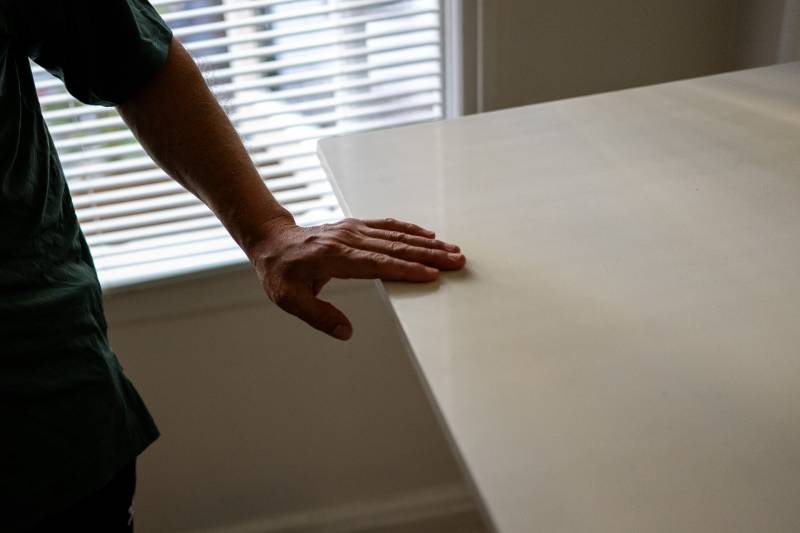Nearly all of the workers are young to middle-aged Latino immigrants. Some must rely on oxygen machines to breathe while they await lung transplants, including a 27-year-old man profiled by KQED.
“No amount of business is worth the lives lost and the suffering this is generating,” Dr. Jane Fazio, a pulmonologist at Olive View-UCLA Medical Center who has diagnosed and treated dozens of silicosis patients, said during public comment. “Almost weekly, I have to sit down with able-bodied men in my clinic, and give them a death sentence.”
“I take away their livelihoods, and I watch as their wives and children try to understand that they will lose their loved one,” she said.
Hundreds more cases are expected if harmful exposure continues, according to officials with the California Division of Occupational Safety and Health, known as Cal/OSHA.
The agency estimates that most of the roughly 800 stone fabrication shops in the state don’t comply with current safety rules, which require employers to monitor permissible silica levels before taking protective steps.
The new emergency regulations effectively prohibit the dry cutting of engineered stone with 0.1% or more silica or natural stone with 10% or more. High-risk tasks such as drilling and polishing require wet-cutting saws or other tools that spread water on the material to suppress dust.
Some industry representatives urged the board to postpone its vote and said the new requirements would be too costly and drive businesses out of state. But several medical professionals countered that California could not afford to wait.
Cal/OSHA officials said they plan to conduct proactive inspections of stone fabrication shops and will also gain new enforcement tools. Inspectors who observe the dry cutting of engineered stone must issue an order prohibiting the use of employees’ labor until the hazards are fixed.
“Adoption of the silica emergency temporary standard will absolutely save lives,” Cal/OSHA Chief Jeff Killip told board members.
The standard goes into effect on Dec. 29 and lasts for one year. Cal/OSHA officials said they will work to craft permanent silica regulations.

